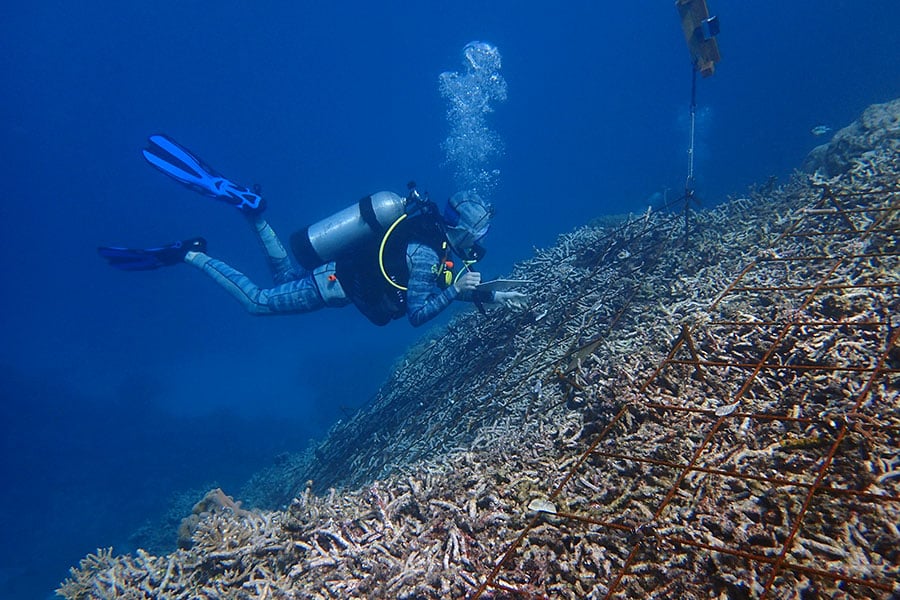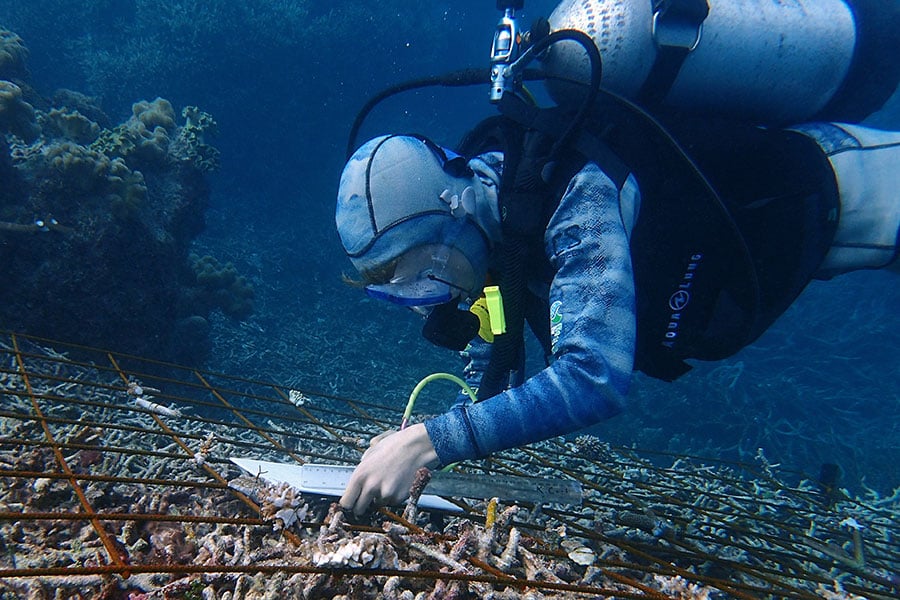An innovative, scientific Reef Restoration Research Project is underway at Quicksilver’s platform at Agincourt Reef 3.
This important project, conducted by Quicksilver and researchers from Reef Ecologic, is aimed at helping to preserve the significant ecological, social and economic values of the Great Barrier Reef World Heritage Area.
Reef restoration video update 2022.
Started in July 2018, the project has been a great success with significant coral growth and coverage over the research site.
What led to this Reef Restoration Project?
Due to a combination of natural events, including cyclonic wind and waves several years ago, a patch of reef close to the pontoon was damaged. As a result, an area of coral rubble formed and with an unstable substrate, the natural recovery of new corals was impeded.
After consultation with the natural area managers, the Great Barrier Reef Marine Park Authority, we were issued with the permit to conduct a rehabilitation research project at this site. It’s the first time this type of reef restoration strategy has ever been undertaken on the Great Barrier Reef.

What does the Project involve?
Quite simply, the Project involved the installation of a mesh structure underwater to grow coral, which was initially connected to a power source.
To do this, three steel mesh panels of 1.5 metres (5ft) x 3 metres (10ft) were placed over the coral rubble to stabilise it. Small coral “recruit colonies” were then attached onto the mesh. The coral colonies are measured regularly to assess growth rates and coverage.
When snorkelling near this area, you can see the progress of the research site. It is safe and poses no threat to any marine life.

When did the trial start?
The mesh was installed in the research site over a period of three days in mid July 2018. The coral colonies will be measured regularly throughout the trial period to compare growth rates.

What do we hope to gain?
It is hoped that this rehabilitation technique will assist in making areas such as this research site more resilient to stress in future natural disturbances, as well as support resilience in many other reef systems in the world.
Who is conducting the Project?
This research project is a partnership with Quicksilver’s Reef Biosearch team of marine biologists, Reef Ecologic and the Australian Government’s National Environmental Science Program with funding support from AMPTO.
If you would like to learn more about this innovative project, speak with our friendly marine biologists onboard. Reef Ecologic can also be contacted at www.reefecologic.org













